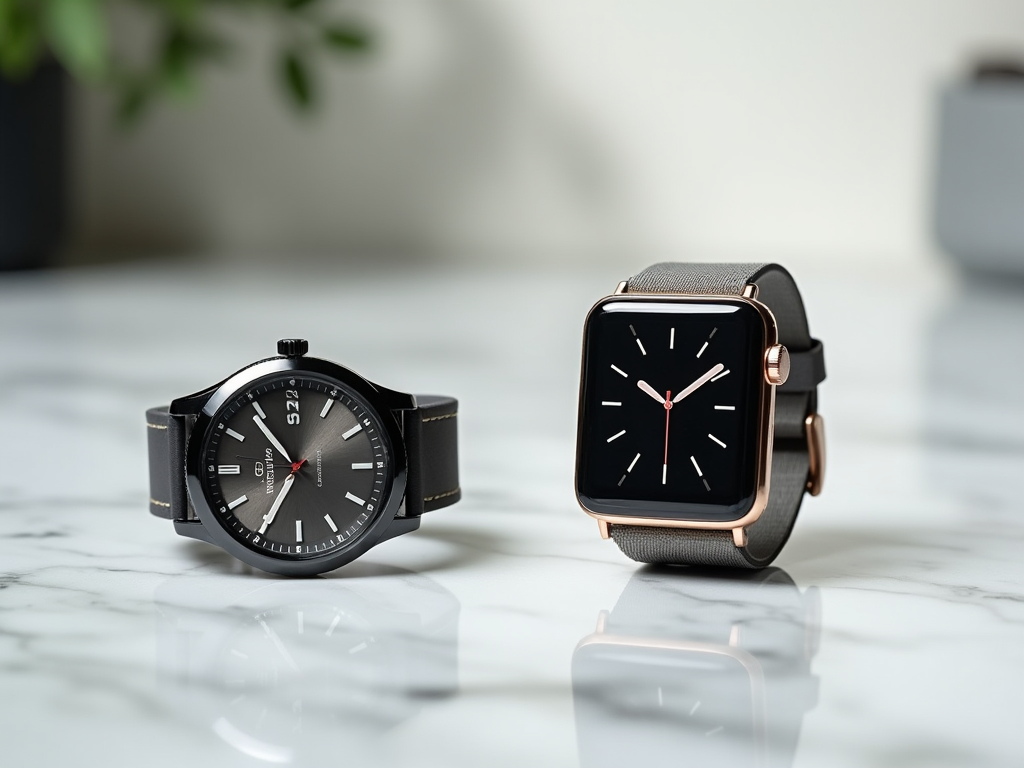In an age where technology permeates every aspect of our lives, the choice between traditional regular watches and modern smartwatches has sparked considerable debate. For those with a keen interest in timepieces, understanding what each option brings to the table is essential. Regular watches have long been symbols of craftsmanship and elegance, serving not just as timekeepers, but also as statement pieces. On the flip side, smartwatches boast an array of advanced features designed to cater to the tech-savvy consumer, transforming them into multifunctional gadgets. With each type of watch appealing to different lifestyles, it begs the question: are smartwatches truly worth the investment? Let’s dive deeper into this fascinating comparison.
The Appeal of Regular Watches

Regular watches have maintained their rightful place in the fashion world, primarily due to their timeless design and exquisite craftsmanship. Enthusiasts appreciate the artistry involved in their creation, which often blends traditional techniques with luxury materials. Whether it’s a classic mechanical watch or a quartz piece, the intricacy of gears, the choice of metals, and the art of watchmaking itself are all valued highly by collectors. The allure of owning a piece that’s not just functional but also an expression of taste and individuality cannot be overstated. Beyond aesthetics, regular watches offer straightforward practicality, focusing on one core function: telling time.
Pros of Regular Watches
- Longevity: High-quality regular watches can last decades or even generations with proper care.
- Durability: Many traditional watches are built to withstand the test of time against daily wear and tear.
- No Battery Dependency: Unlike smartwatches, regular watches often operate without needing to be charged.
- Investment Potential: Certain luxury watch brands have a history of appreciating in value.
- Collector’s Item: Regular watches can be coveted items among watch enthusiasts.
Cons of Regular Watches
- Limited Features: Typically, they only tell time and maybe offer minimal additional functions.
- Lack of Connectivity: Regular watches do not sync with smartphones or other devices.
- Maintenance Costs: Luxury models may require costly service and repairs if damaged.
The Rise of Smartwatches

In contrast, smartwatches have surged into the market, reshaping how we perceive wearable technology. Over the past decade, these innovative devices have evolved to become indispensable tools for many people. Their growing popularity has influenced manufacturers to integrate advanced technologies, attracting more consumers. This evolution reflects a shift in priorities, as convenience, connectivity, and multifunctionality now dominate buyer preferences. Unlike regular watches, smartwatches offer an array of features that go beyond mere timekeeping, encompassing health tracking, notifications, and customization.
Features of Smartwatches
- Health Tracking: Many smartwatches monitor heart rates, track sleep patterns, and log physical activities.
- Notifications: Receive alerts for calls, texts, and app notifications directly on your wrist.
- Customizable: Multiple watch faces, straps, and apps cater to personal preferences.
Pros of Smartwatches
Smartwatches stand out thanks to their versatility and multifunctionality. Users can not only check the time but also access crucial information on-the-go. This type of watch acts as an extension of a smartphone, allowing for seamless communication and connectivity. Frequent updates keep apps and features fresh, echoing users’ ever-changing needs. Moreover, they offer users the benefit of tracking fitness and wellness metrics, which is increasingly valuable in today’s health-conscious society. However, the technological dependence these devices require often leads consumers to weigh their pros against potential downsides.
Cons of Smartwatches
- Battery Life: Many smartwatches need regular charging, sometimes daily, which can be inconvenient.
- Distractions: Continuous notifications may create distractions rather than enhancing productivity.
- Obsolescence: The rapid pace of technological advancement can make devices feel outdated quickly.
Comparing Cost and Value
When analyzing the market, it’s vital to consider the cost ranges of both regular watches and smartwatches. A traditional watch can vary significantly, from affordable brands to luxury options that command high prices. Similarly, smartwatches also come in diverse price points, appealing to budget-conscious consumers as well as those seeking high-end models. Below is a comparative table showcasing average price ranges:
| Type | Price Range |
|---|---|
| Regular Watches | $50 – $50,000+ |
| Smartwatches | $100 – $1,500+ |
The long-term value of regular watches is often contingent on the brand and model, whereas smartwatches tend to diminish quicker due to technological advancements. It’s essential for consumers to perform a cost-benefit analysis based on their specific needs, lifestyles, and preferences when deciding which type of watch to invest in.
Are Smartwatches Worth It?
To determine if smartwatches are worth the investment, one must evaluate personal lifestyle choices. For tech enthusiasts and those who value connectivity, smartwatches can significantly enhance daily routines. However, individuals who appreciate traditional craftsmanship and simplicity in timekeeping might find more satisfaction in regular watches. Specific use cases, like health monitoring or notification management, can tip the scales in favor of smartwatches. Consumer experiences and reviews often highlight how these devices can simplify lives, while many still cherish the elegance and craftsmanship of regular watches in their collections.
Conclusion
In the realm of timepieces, both regular watches and smartwatches hold distinct advantages and disadvantages. Regular watches carry a sense of tradition, craftsmanship, and style, while smartwatches introduce practicality and connectivity suited for modern living. Your choice ultimately stems from individual priorities—whether you value timeless design or the modern functionalities of technology. As consumers navigate these options, understanding one’s lifestyle and needs will lead to a resolution that resonates with personal preferences and values.
Frequently Asked Questions
- What is the main difference between a regular watch and a smartwatch?
Regular watches focus on timekeeping and style, while smartwatches offer connectivity and various tech features. - Do smartwatches require charging?
Yes, smartwatches typically require charging, usually every day or a couple of days, depending on usage. - Can I use a smartwatch for fitness tracking?
Yes, most smartwatches come with built-in fitness tracking features such as heart rate monitoring and activity logging. - Are regular watches better for investment?
Traditionally, luxury regular watches can appreciate in value, but some smartwatches also have collector value, albeit often lower. - Which option is more suitable for a tech-savvy person?
A smartwatch is generally more suitable due to its integration with technology and various applications.
